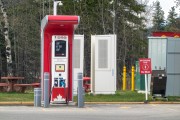As a member of the premier’s Transit Investment Strategy Advisory Panel, I can attest to the challenge of finding a funding strategy that makes everyone happy. The panel quickly agreed that new dollars are needed if we want a comprehensive transit network stretching from Hamilton to Oshawa. We went on to spend 12 weeks agonizing over how to raise those dollars with the least amount of pain for taxpayers — especially those struggling to make ends meet.
The strategy the panel proposed this morning represents a consensus on how to raise new dollars. It passed the tests set by 13 panel members representing diverse interests — including labour, business, developers and drivers — who also consulted with a long list of stakeholders. The panel has presented a well-thought-out proposal that deserves serious consideration from the broader public.
Putting the gas tax in perspective
The panel’s proposal includes a gas tax, which I’ll be exploring further in my next blog post. For the average driver in the Toronto region, the proposed five cent gas tax would cost about $85 per year. If you’re filling the tank of a Honda Civic, it adds $2.50 at the pump.

If that seems relatively small, that’s because it is. By comparison, Vancouver drivers pay 23 cents per litre in combined gas and carbon taxes. Five cents is a reasonable and affordable price — especially when you consider the huge gains in economic and social quality of life for everyone in our region.
Right now, 42 per cent of residents in the Greater Toronto and Hamilton Area live within two kilometres of a rapid transit line. Investing in a regional transit network will increase that number to 80 per cent. One million more people will be within a five to 10 minute walk of the new subways, light rail, rapid busways and improved GO trains. Living that close to transit gives households the option of getting rid of one car, along with the $11,000 in yearly expenses that come with it.
Making the most of transit investments
These numbers may even understate the true benefits. With a 25-year transit plan like the Big Move, some projects and routes may need to be modified to serve more riders and generate higher benefits.
 The panel report echoes some of the views articulated in a recent Neptis report with regards to reviewing the cost-benefit evaluations of transit projects. The Big Move is a “living” plan that requires some flexibility. Investment decisions need to be evidence-based, and not political.
The panel report echoes some of the views articulated in a recent Neptis report with regards to reviewing the cost-benefit evaluations of transit projects. The Big Move is a “living” plan that requires some flexibility. Investment decisions need to be evidence-based, and not political.
Of course, while it’s prudent to review some projects and adjust plans to reflect emerging growth, this must not stop us from raising money and getting shovels in the ground. The panel’s report identifies priority projects that do make the grade, and these should be built sooner rather than later.
Our region’s traffic problems are getting worse and we need to get moving. To this end, the panel recommends that a number of investments be made immediately as part of a “kick-start” program to improve local transit throughout the region.
A blueprint for investment
There’s no escaping our region’s need for a transit funding strategy. Cutting waste simply can’t provide the scale of funds needed to build, operate, and maintain a transit network that will eventually serve more than 10 million people. Even Mayor Rob Ford, with all of his "gravy train" rhetoric, couldn’t escape this reality — Torontonians may have to pay higher property taxes for the next 30 years to fund his three-stop subway in Scarborough.
Rather than making ad-hoc transit project and tax decisions, the panel’s proposal is a reasonable and predictable way to raise and allocate funds that are dedicated to transit. Ensuring that new dollars go into a stand-alone fund is at the core of the proposal: it helps the public trust that these funds are spent fixing our transportation problems, and that we’re tracking how every dollar is spent.
Of course, the panel’s proposal isn’t the only option for raising new dollars. The Toronto Region Board of Trade, for example, recommended a broader suite of revenue tools that relies less on debt financing. Others have expressed strong support for the American model of sales taxes. Personally, I’m interested in highway tolls that are introduced after new transit alternatives are in place, allowing drivers to make a choice between the two modes.
Whatever approach the provincial government ultimately takes, it needs to raise funds in a fiscally responsible way, and one that respects the taxpayer. New transit won’t be built by wishful thinking or imaginary savings. We need new dollars, plain and simple.
Follow Cherise on Twitter @CheriseBurda.





